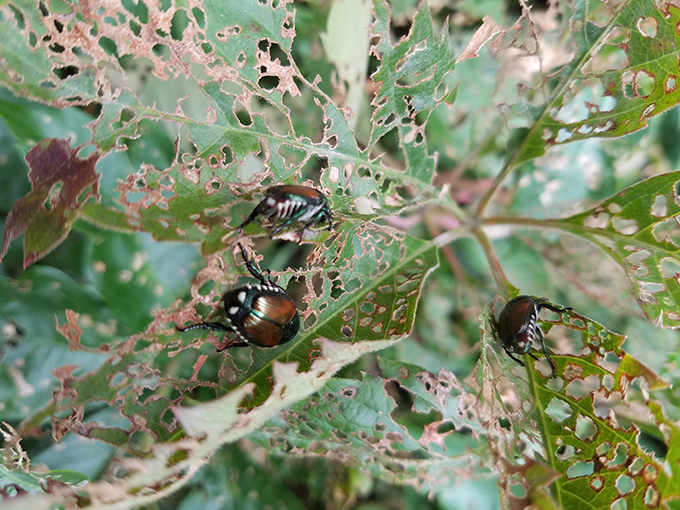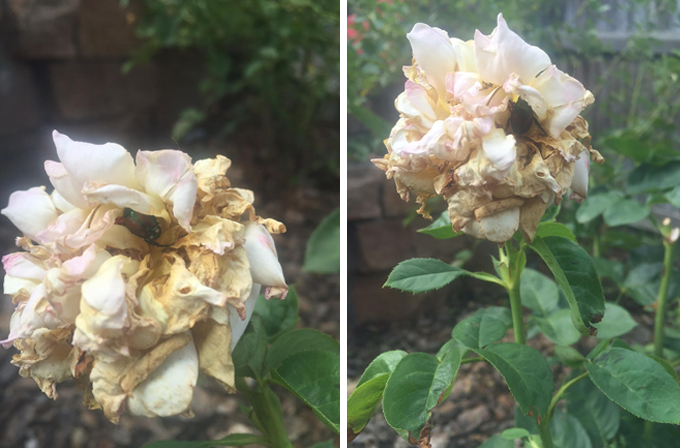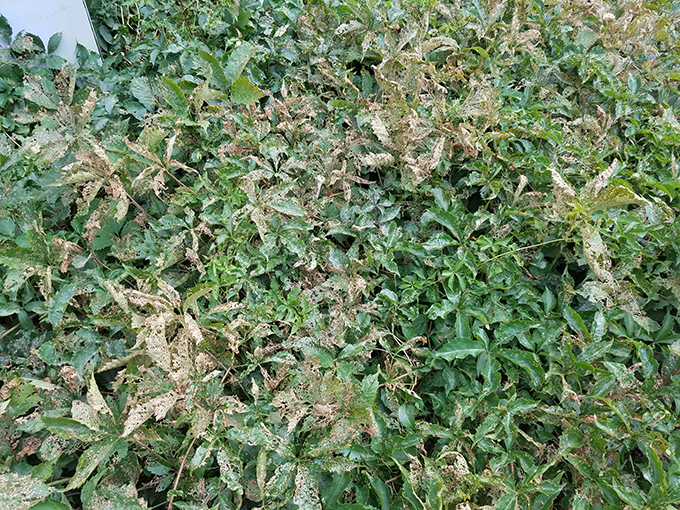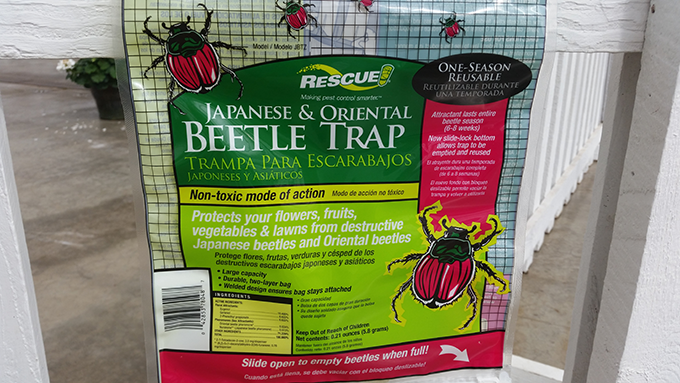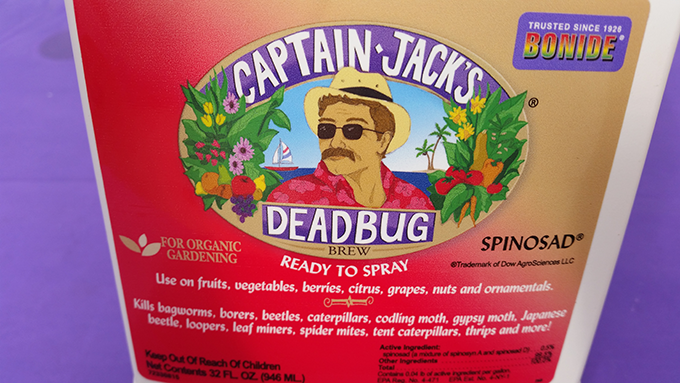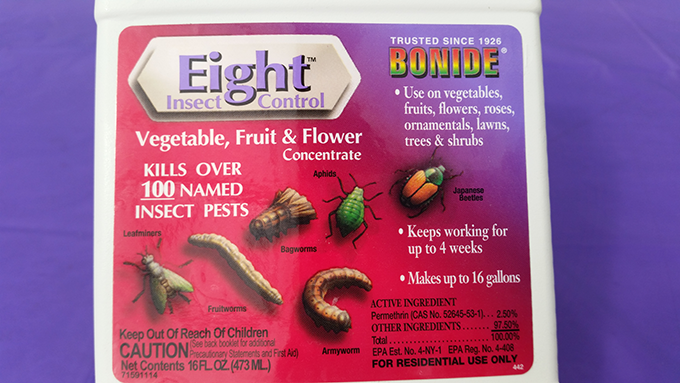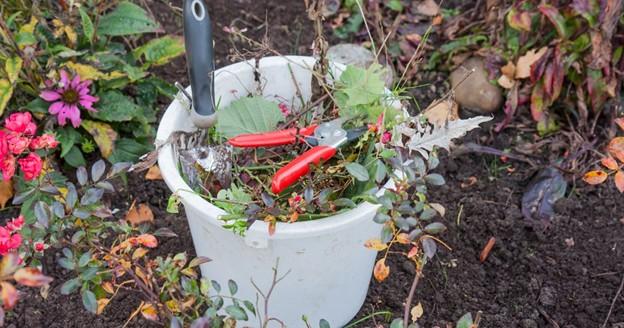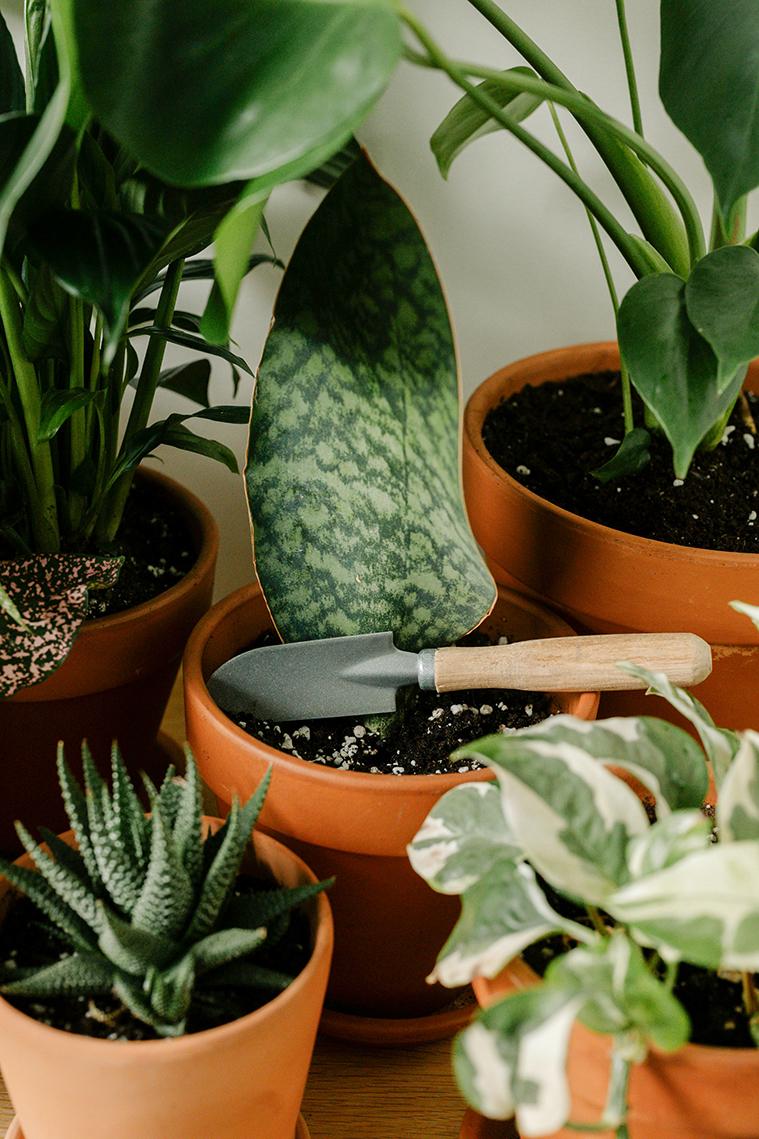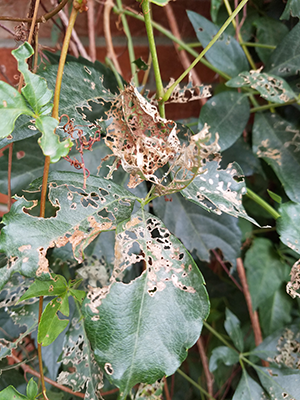 Japanese beetles are the topic of conversation for our Tagawa Garden Advisors at Dick’s Corner. They’re busy these days, trying to help many of our guests diagnose why dozens of different plants in their yards suddenly look like Swiss cheese, and worse.
Japanese beetles are the topic of conversation for our Tagawa Garden Advisors at Dick’s Corner. They’re busy these days, trying to help many of our guests diagnose why dozens of different plants in their yards suddenly look like Swiss cheese, and worse.
Just to see them, Japanese beetles are quite pretty: half an inch long, metallic green bodies with copper-colored wings, and five white tufts of hair that look like polka dogs along their sides. But do not be fooled by their attractive appearance! These beetles may be the most damaging garden pests we’re seeing this summer. And they’re now showing up by the millions in Front Range gardens.
Japanese beetles have been plaguing gardens east of the Mississippi River for decades. Now, unfortunately, many Colorado gardens are joining the club. Within the past few weeks, our Garden Advisors at Dick’s Corner are seeing more and more of our guests coming in with plant samples showing classic signs of Japanese beetle damage. Some leaves have been chewed so heavily that they look like ragged green lace. Flowers, especially roses, are being decimated almost overnight when infestations are heavy.
There’s no easy answer or quick fix that will put an end to this invasion. But there are things we can do to take a stand and begin to fight back.
Read on.
Japanese Beetles attack on two fronts
Japanese beetles’ life cycle depends on our lawns and irrigated fields. That’s where they lay their eggs which hatch into larvae (grubs) and feed on grass roots. These white C-shaped grubs grow into adult beetles and emerge in late June through August.
The root feeding by the grubs can damage the grass to the point that it’s starved for water. If the feeding is heavy enough, patches of lawn may turn brown and die.
The second, and even more damaging attack comes from adult Japanese beetles. When they begin to crawl out of their grassy homes in early summer, they head straight for our gardens. There are lots of plants they seem to find especially irresistible. Virginia Creeper is among their favorites. They usually avoid the main veins of the leaves, but they treat all of the softer leaf tissue as their personal buffet.
Rose blossoms are another favorite. Petal by petal, the flower seems to disappear. And to make matters worse for us gardeners, these attackers feed in packs. One Japanese beetle signals to dozens of others when a good meal has been found. If you’re not paying attention, the beetles take over… feeding and mating on the plants that looked beautiful and healthy just a few days earlier.
So what can we do?
There are several things we can do to fight back, but none of them is a sure-fire game changer. Start by being vigilant. Keep a keen eye on the Japanese beetles’ favorites plants. Aside from Virginia Creeper and roses, monitor Linden trees, Norway maples and American elms. Watch for damage on fruit trees including apple, crabapple, peach, plum and cherry. Raspberries, strawberries and grapes are often targeted, along with green beans, corn, asparagus and basil.
The beetles love the heat of day. That’s also when they move their fastest. So go out in the cool of the morning armed with a small bucket of soap watery. The beetles are often in plain sight. Give them a quick flick with your finger so they fall into the water one at a time or en masse. If you knock the beetles to the ground, they disappear in a blink. But drop them into the soapy water, and they’re done for. Don’t toss the water with the dead beetles onto the ground. Flush it.
And no squishing! A squashed Japanese beetle sends out pheromones that serve as an invitation to other beetles in the neighborhood. The females are sending enough pheromones on their own, beckoning to the males. They don’t need our help!
Japanese beetle traps… Yes or no?
The answer is “maybe.” Tagawa Gardens sells Japanese beetle traps, but they should be used to detect, not to control. The traps can be helpful to monitor for beetles… to determine if they’ve arrived in your neighborhood. But the powerful compound used to lure the beetles can actually attract more beetles than you would have had otherwise.
Colorado State University says the traps are not recommended for Japanese beetle control in urban settings. Use them only as a tool to see if the beetles are present. Never put them near the plants the beetles prefer. (See C.S.U. Fact Sheet No. 5.601)
Pesticide options
If you choose to garden organically, consider using a naturally-occurring bacteria called “spinosad®.” Tagawa’s sells this as “Captain Jack’s Dead Bug Brew™.” Spinosad® has to be ingested to be toxic, so beneficial insects aren’t hurt because they don’t foliage or flowers. However, spinosad® is toxic to bees that come in contact with the pesticide within three hours of application. Apply “Captain Jack’s” late in the day, after sunset, when the bees have gone home.
And keep in mind that while they’re not “beneficial” in the true sense of the term as it’s used in gardening, spinosad® will harm the caterpillars (larvae) of butterflies that we value.
Spinosad® should be used only when you know the Japanese beetles are present. It should not be applied as a preventative. As with any pesticide, always follow label directions and apply only at the recommended rates.
Tagawa Gardens also carries a chemical option for Japanese beetles. It’s a pesticide called “Eight®.” It works as a contact spray, meaning it needs to be sprayed directly onto the beetles. Eight® works best when the beetles are most active, in the heat of the day. But that creates a potential problem since hot temperatures and wind can carry the spray beyond where you want it. Mid-day is also when the honey bees are most active. Eight® can be very effective, but should be used properly, always following the directions on the label.
And what about our lawns, where the grubs live?
There are two things we can do in the routine care of our lawns that may discourage, but not prevent, Japanese beetle grubs. First, water your lawn deeply but infrequently. The grubs like to hang out in the top few inches of the soil. Keeping that soil constantly moist only encourages them. When you water, make sure moisture is getting down several inches, where the grass roots can take it up over time and go longer between waterings. Shallow, more frequent watering just makes the grubs that much happier.
Second, keep your grass at least three inches tall. Three-and-a-half inches is even better. The longer blades of grass may make it a bit more difficult for the adult beetles to get down to the soil line to lay eggs. Proper watering and grass height are healthy lawn-care habits anyway, with our without the Japanese beetles.
And then there’s “Milky Spore” and more….
“Milky Spore” is interesting stuff. It’s a bacteria that’s harmless to any and all creatures except Japanese beetle larvae. For them, it’s deadly. Milky Spore can be effective, but it takes time. The powdered spore is applied just once. The Japanese beetle grubs eat it and die. The dead grub then gives off billions of new spores that continue to inoculate the soil and are taken up by following generations of grubs. It can take a few years to see any benefit, but for serious infestations, it’s worth a try. Tagawa’s Garden Advisors at Dick’s Corner will gladly offer further advice about the use of Milky Spore.
Also ask our folks at Dick’s Corner about “beneficial nematodes.” These soil dwelling organisms may be helpful in controlling Japanese Beetle larvae. We have them, too—you purchase them here, then they are shipped live and fresh to your door with instructions on how to apply.
In the meantime….
For now, remember that we’re in this together. Tagawa Gardens is at the ready to help with this nasty pest. Most of us at Tagawa’s garden at home. The pictures you’ve seen in this blog are from some of our gardens. We get it! (Thank you to Dee and Keith fof sharing their photos.)
Take pictures. Bring bagged samples to Dick’s Corner. And let us know what we can do to help you meet the Japanese beetle onslaught head-on!
